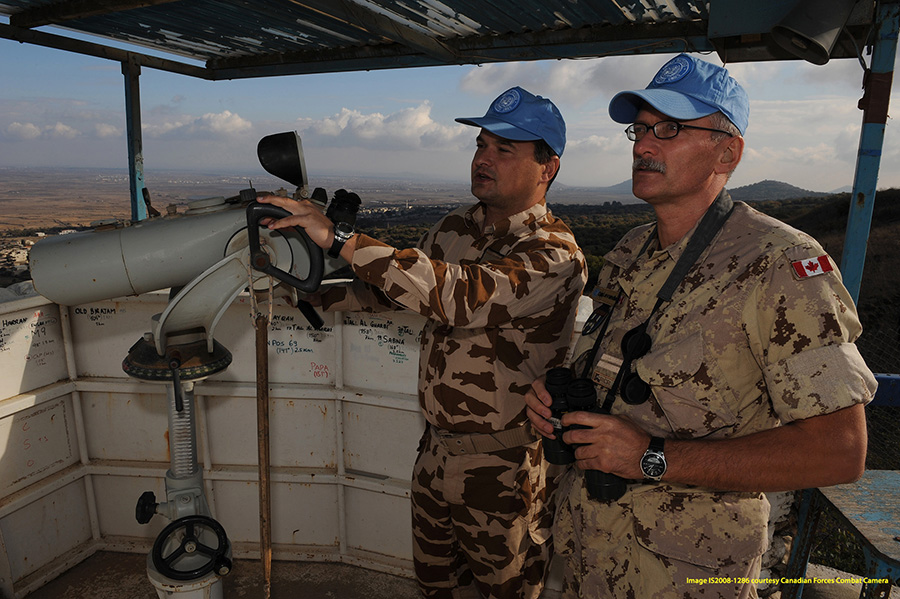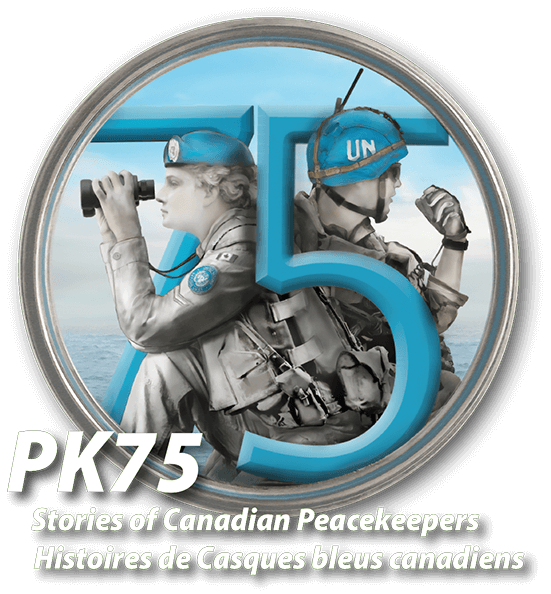
Canadian Participation in Future UN Peace Operations
INITIAL UN PEACEKEEPING
The raison d’être of the United Nations, that Canada helped create in 1945, is stated in the first chapter of its charter:
The purposes of the United Nations are as follows:
1. To maintain international peace and security, and to that end: to take collective measures for the prevention and removal of threats to the peace, and for the suppression of acts of aggression or other breaches of the peace, and to bring about by peaceful means, and in conformity with the principles of justice and international law, adjustments or settlement of international disputes or situations which might lead to a breach of the peace.
Subsequently, Chapter VII describes the actions that may be taken against threats to the peace, breaches of the peace, and acts of aggression. Its Article 43 states:
1. All members of the United Nations, in order to contribute to the maintenance of international peace and security, undertake to make available to the Security Council, on its call … armed forces … necessary for the purpose of maintaining international peace and security.
This need for capable armed forces to maintain international peace and security, generated multiple proposals to provide a workable process. These have ranged from the creation of a UN army to the assembly of national contingents.
As a founding member of the UN, Canada has been at the heart of these collective peace efforts. In 1947, Canadians were already on a UN commission supervising an election in Korea. Between 1950 and 1954, Canada provided a brigade group to the UN “police action” that stopped North Korean and Chinese invaders. Lester Pearson proposed the UN Emergency Force in 1956 to deal with the Suez Crisis. Secretary-general Dag Hammarskjöld, accepted the plan for the first UN peacekeeping force, using military units to interposition between opposing armies. Canadian General ELM Burns was appointed commander of that UNEF “peacekeeping” force. This was the Golden Age of Canadian Diplomacy where Canada and the UN undertook a new role that has been a prevalent part of its foreign and defence policy ever since.
Canadians continued to support UN peace missions during the Cold War, taking continued pride in doing their duty! Subsequent missions included the Congo, 1960 to 1964, where Canada provided the communications network, bilingual liaison officers and several key leaders (Berthiaume, Dextraze) for the 20,000-man UN force; the Cyprus crisis in 1964 where Canada provided successive infantry battalions and stopped the Turk invasion of Nicosia; the new UNEF II in Egypt, after the 1973 Yom Kippur war; and the UN Disengagement Force on the Golan. Then the Namibia mission created a precedent, becoming a “multidimensional” civil-military operation, UNTAG, in 1978. In 1990, Namibia celebrated its independence.
POST COLD WAR PEACE OPERATIONS
Following the fall of the Berlin Wall in 1989, UN peacekeeping was discredited by a series of failed missions. These included the Somali civil war, the Rwanda genocide, the Srebrenica massacre, the Darfur conflict, and the Congo wars where six million people died since 1996.
Within the Security Council, UN mandates became more complex and ambitious, dealing with these internal conflicts rather than more simple issues of sovereignty and cease-fires. They tasked UN peacekeepers to ensure security, protect civilians, neutralize militias, deter threats, re-establish state authority, rebuild the security sector, and protect human rights. To do this, they directed UN troops to use “robust” peacekeeping and, at times, “all necessary measures”.
UN force commanders were asked to outline their challenges. They highlighted the ineffectiveness of many national contingents that were unable to defend the mission, apply “all necessary means” or protect civilians. Others have instructions from their country that prohibit such robust defence. The UN Internal Oversight Service reported a persistent failure to intervene with force when civilians were under attack. A second critical issue was that UN force mobilisation and deployment to the mission area is too slow.
In response to such criticism by force commanders and observers, Security Council mandates became less constrained, and force structures were made more capable. Some UN missions were reinforced with quick reaction, robust contingents, ready for the more difficult tasks of protecting civilians, dealing with “spoilers”, and “peace imposition”.
Troop providing countries (TCC) also submitted proposals. In 1995, Canada argued for UN rapid reaction forces. This resulted in the “Standby High-Readiness Brigade” (SHIRBRIG), created by Denmark and a dozen countries of the developed world, including Canada. It provided well-prepared troops on stand-by for a rapid deployment when requested by the Security Council. It was first deployed to monitor the ceasefire and border demarcation between Ethiopia and Eritrea. Canadian BGen Gregory Mitchell commanded the brigade from 2004 until 2006. However, the brigade was larger than required for most UN missions and was closed in 2009.
In the Congo, the UN “Force Intervention Brigade”, created by concerned African nations, was authorized by a UN resolution in 2013. Its mission was to conduct highly mobile “targeted offensive operations” to neutralize and disarm designated armed rebel groups such as M23. This African brigade was most successful in its first operations and is widely mooted as a model that could be adopted for other difficult UN missions.
In South Sudan, Resolution 2304 in 2016, directed the creation of a 4,000-man Regional Protection Force to assure security and freedom of movement in Juba, the capital. It has a separate and more robust mandate than the parent peacekeeping force, UNMISS. It is authorised to use all necessary means, and to promptly and effectively engage any actor that is credibly found to be preparing attacks. As we write, it appears to have succeeded.
In 2015, in response to the recommendation of the High-Level Independent Panel on Peace Operations (HIPPO), the Secretary-General authorized the creation of the Vanguard Capability. It is a standby 4,000-man force that would allow the UN to quickly insert a military capability into a new mission area or reinforce an existing mission. It is an integrated military and police brigade comprised of infantry units, attack helicopters, enablers and other support units. It has a permanent core command element, but its units remain at their home base until deployed by the Security Council. The first elements deploy within 10 days, while the rest of the force is deployed in phases of 30 to 90 days. This force is now fully manned (pledged) but has not yet been used. It has no Canadian component.
THE 2023 MINISTERIALS
The capacity of UN peace operations depends on the voluntary contribution of troops, police, and other resources by UN Member States. Heads of government and ministers meet at “Ministerials” every one or two years to voice their support for UN peacekeeping and pledge troop contributions. The agenda has broadened since 2014 to now include issues such as gender, and training needs. The Secretary General has issued a plan, “Action for Peacekeeping”, that addresses such concerns. However, the UN Secretariat emphasizes that “the generation of high-performing and specialized capabilities and other pledges to meet UN needs” is critical.
Meeting this requirement requires that countries make significant commitments of their military and police resources, using the UN’s Peacekeeping Capability Requirement System (PCRS). His system allows discussion between the UN and contributing countries resulting in the registration of military, police and civil defence pledges of units.
The next biennial “ministerial” meeting will be in Accra, Ghana on 5–6 December 2023. A list of the gaps in filling UN needs has been published along with requests to make national pledges early. It includes infantry battalions, attack helicopter units, force protection units, utility helicopter units, quick reaction companies, engineer demining units, reconnaissance units, and different logistics and enabling units. The requirements that are “in high demand and low supply” are helicopters, fixed wing aircraft, infantry battalions, explosive ordnance disposal units, and quick reaction force companies.
Canada’s current contribution to UN peacekeeping capability is embarrassing. As of February 2023, it consists of 5 mission experts, 22 staff officers, 31 police, and no troops. The last pledge made by Canada was six years ago at the 2017 UN Peacekeeping Defence Ministerial conference in Vancouver, BC. It consisted of tactical airlift, a helicopter task force, and a Quick Reaction Force of 200 personnel. The helicopters, which assisted with medical evacuations, were much appreciated. However, the pledge of a Quick Reaction Force was never registered, despite discussions with the UN. The author’s contact in May with National Defence indicates that our Embassy at the UN in New York fully supports the UN process of troop pledges, and is currently in discussions with the UN Department of Peace Operations regarding our future contributions.
The United Nations, with all its weaknesses, remains the only institution the world has to engage in diplomacy and to settle conflicts and disputes without resorting to war. The effectiveness of the UN requires highly capable military and police resources that the Secretary General can deploy in support of his interventions. Without such a capability the Secretary General is just another voice in the wilderness. Current polling indicates that the Canadian population continues to support our participation in peace operations. Canada has provided 125,000 Armed Forces members and police officers to such operations over the past 75 years, making an admirable contribution to peace in the world. We have lost 123 of these peacekeepers, who have given their lives for this cause. It is now incumbent on Canada to return to its support of UN peace operations. The world will be watching Canada’s delegation at Accra in December.


